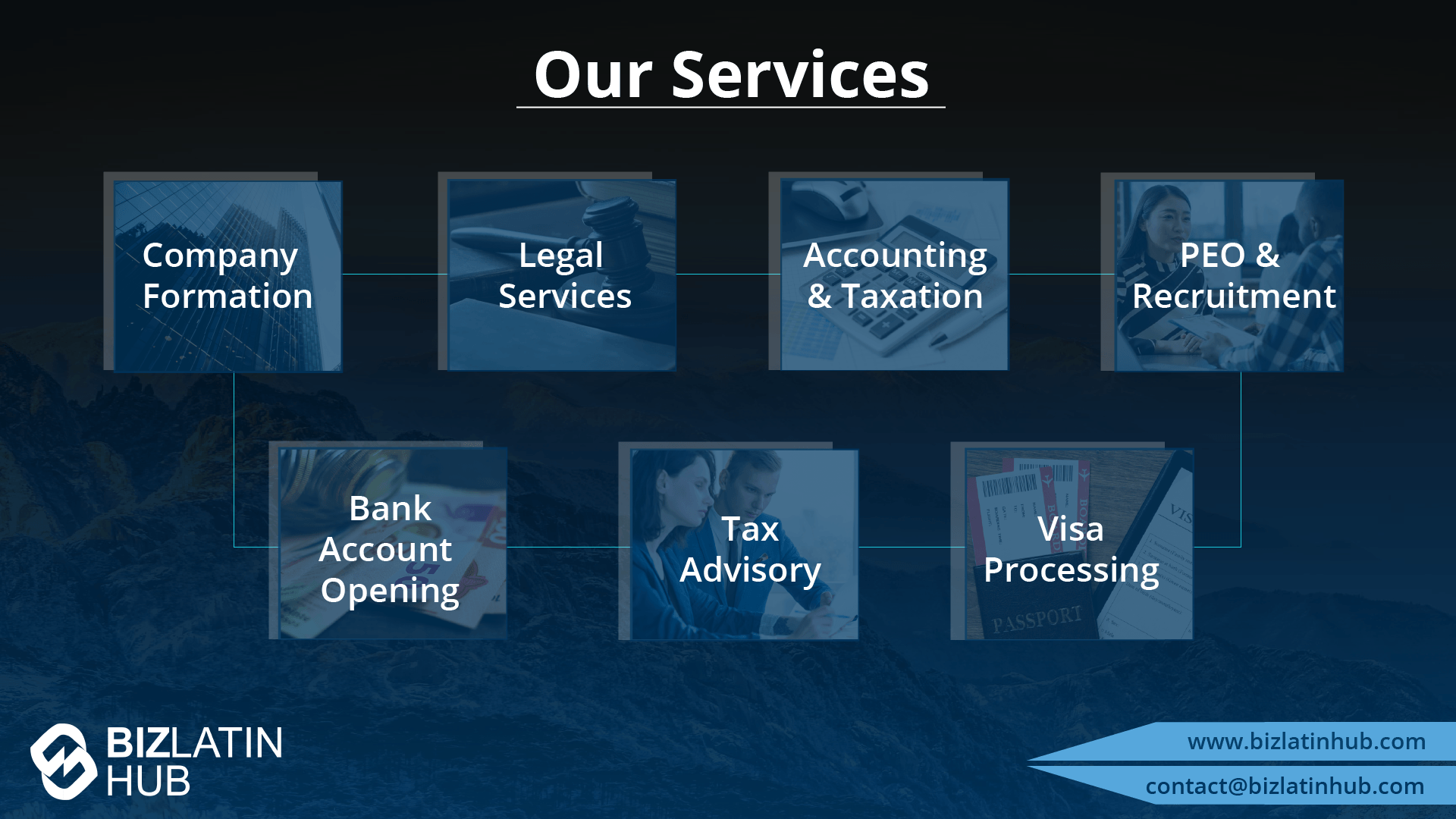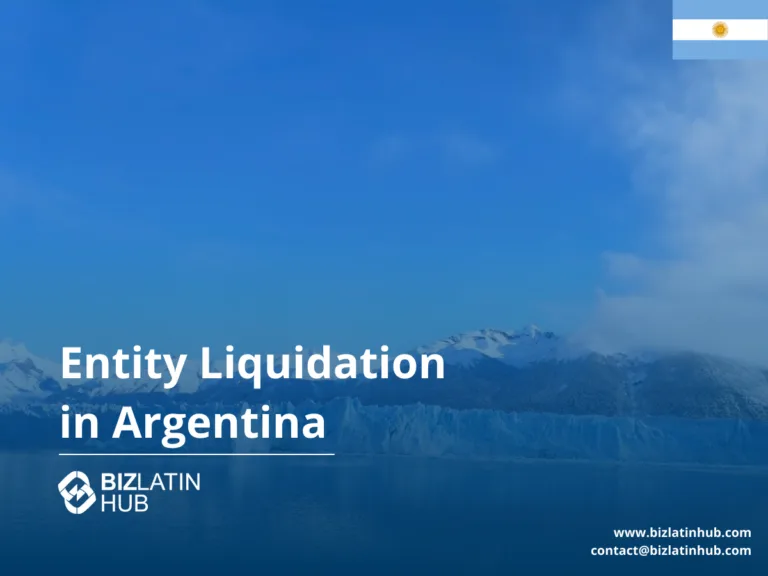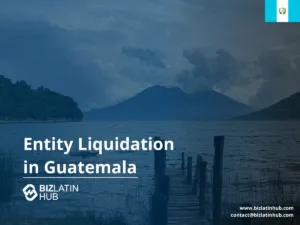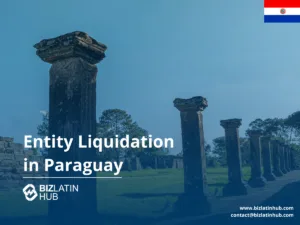As a regional powerhouse, company incorporation in Argentina has been attractive to investors for a long while. However, the country isn’t always easy to operate in. What happens if you’ve entered a new market and business isn’t booming as you thought? Recent changes to economic and monetary policies could mean you want to liquidate a company in Argentina. There are a couple of ways in which to do this.
Key takeaways on how to liquidate a company in Argentina
| 5 Steps to liquidate a company in Argentina | Shareholders’ Meeting. Appointment of Liquidator. Preparation of a final balance sheet. Settlement of all outstanding debts and obligations. Distribution of remaining assets among shareholders. |
| What is the timeframe to liquidate a company in Argentina? | It can take anywhere from six months to a year to fully liquidate a company in Argentina, if everything is in order. Involuntary processes can be much longer. |
| What are the reasons to liquidate a company in Argentina? | These vary, but the key point is to stay compliant and in good standing with the authorities. |
| What are the requirements for involuntary liquidation in Argentina? | This can be triggered by not settling outstanding debts. Unpaid creditors can make a petition that can lead to a bankruptcy declaration. |
Why liquidate a company in Argentina?
Companies consider business liquidation when the market they have entered is no longer profitable for their business. Liquidation is also a key option for companies that have become insolvent – in other words, they are unable to keep up with their financial obligations and must close down commercial operations.
When future market outlook doesn’t project success for your business, you can choose to exit through voluntary liquidation. In this process, you’ll distribute or sell off your assets to meet all final financial obligations, and to recoup money from your investment after you liquidate a company in Argentina.
Argentina’s Public Registry of Commerce (Registro Público de Comercio) oversees company liquidation proceedings. You’ll connect with the Treasury to manage your company’s residual assets, and navigate the rights and liabilities of owners/partners, shareholders and claimants in the business liquidation process. Insolvency, reorganization and out-of-court liquidation agreements for companies domiciled in Argentina are covered by the country’s Bankruptcy Law (Law No. 24,522).
Options for insolvent companies
Reaching an out-of-court agreement
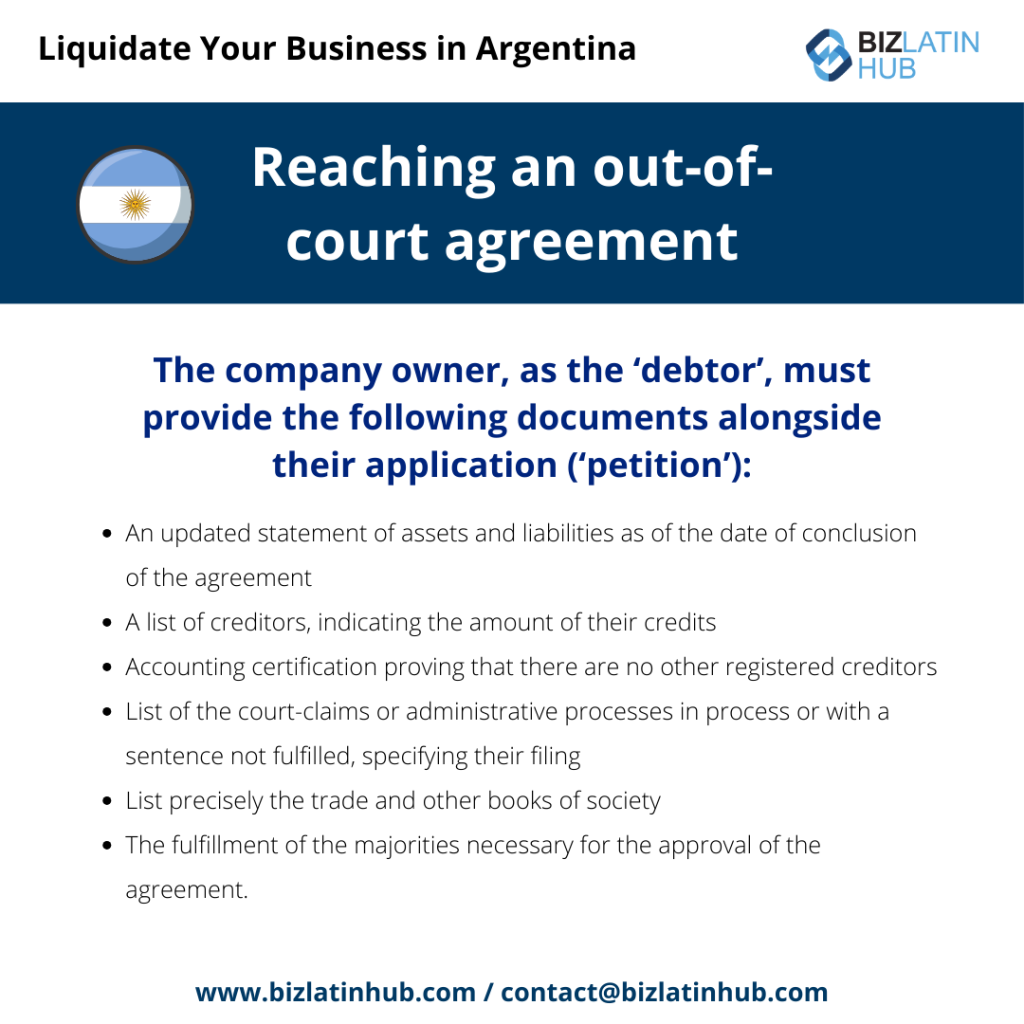
Relevant parties to a company’s insolvency are free to decide on a course of action among themselves. Though seeking court endorsement of this agreement is recommended, it’s not essential for the agreement to be binding between the parties.
For court endorsement, the agreement must be carried out by ‘unsecured’ creditors. These are creditors that did not obtain collateral assets at the time of approving their loan to the company. For court endorsement of an out-of-court preventive agreement, the debtor must obtain the absolute majority of votes from the unsecured creditors representing two-thirds of the unsecured capital.
The company owner, as the ‘debtor’, must provide the following documents alongside their application (‘petition’):
- An updated statement of assets and liabilities as of the date of conclusion of the agreement
- A list of creditors, indicating the amount of their credits
- Accounting certification proving that there are no other registered creditors
- List of the court-claims or administrative processes in process or with a sentence not fulfilled, specifying their filing
- List precisely the trade and other books of society
- The fulfillment of the majorities necessary for the approval of the agreement.
Procedures for business liquidation in Argentina
Filing for voluntary bankruptcy is done via a petition to the relevant court. Before you do this, you must have first suspended all company payments.
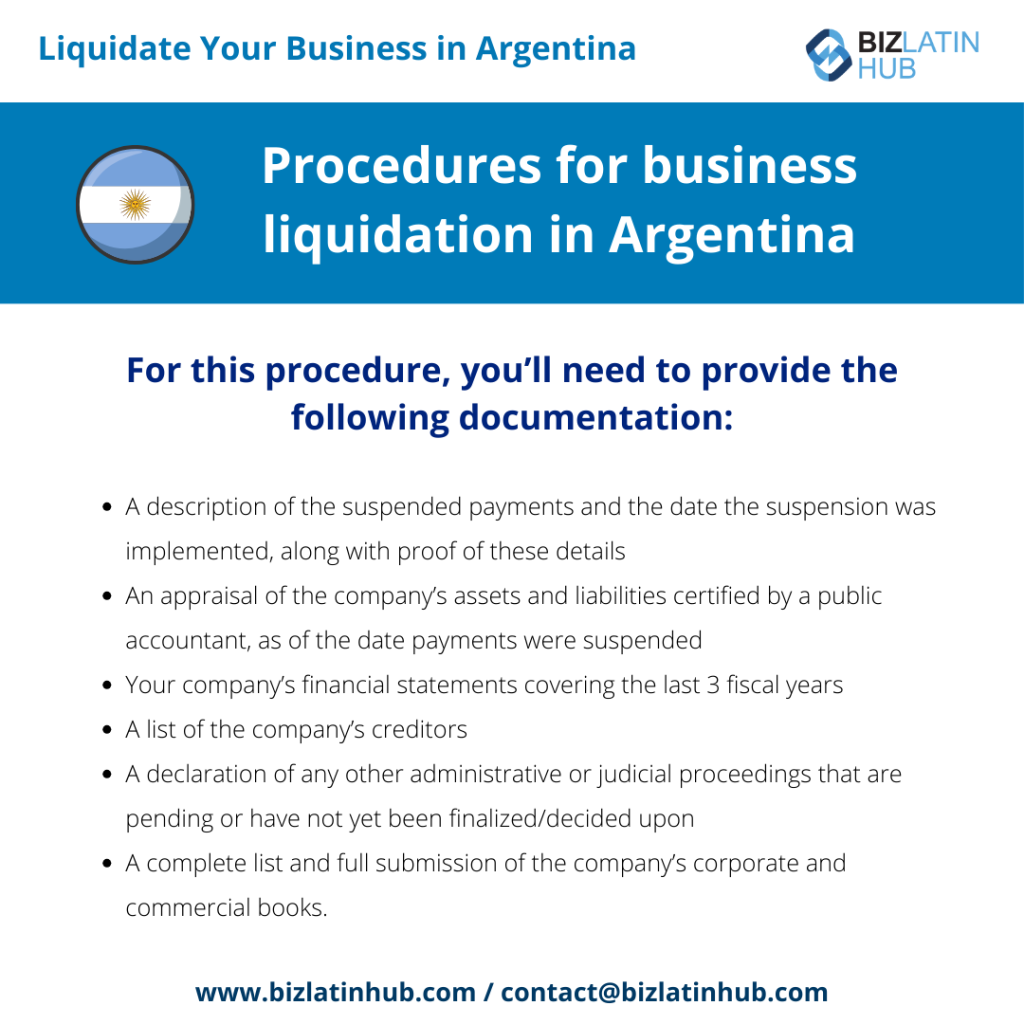
For this procedure, you’ll need to provide the following documentation:
- a description of the suspended payments and the date the suspension was implemented, along with proof of these details
- an appraisal of the company’s assets and liabilities certified by a public accountant, as of the date payments were suspended
- your company’s financial statements covering the last 3 fiscal years
- a list of the company’s creditors
- a declaration of any other administrative or judicial proceedings that are pending or have not yet been finalized/decided upon
- a complete list and full submission of the company’s corporate and commercial books.
Note: the list is not comprehensive, and in the end, would be subject to the receiver’s request.
In this process, the court will appoint a person known as the ‘receiver’ to take charge of your company’s assets. Creditors may then submit claims (with proof) to the receiver who will manage them, and any foreign exchange requirements associated with them.
The status of any pending financial obligations changes, and they’ll become due and payable immediately.
The receiver will then proceed to liquidate your assets in one of 3 ways:
- selling the entire business as a whole
- joint sale of the assets that integrate the establishment, in the case of not having continued with company operations
- selling some or all of the assets individually.
With the proceeds from the assets sold, the receiver will address claims and administrative expenses in the following order of priority:
- claims with special preference or from secured creditors
- administrative expenses such as maintenance, and costs incurred during court and liquidation proceedings
- ‘general preference’ claims such as labor, social security and taxes owed
- unsecured claims
- claims on subordinated debt
You’ll need to cease all business activities unless you get prior approval from the court, and remain in Argentina throughout this process. In a partnership, a company’s partners must give unanimous consent before they liquidate a company in Argentina.
A note on reorganization
Reorganization allows a company to stay in business. Its owner(s) can retain the company’s assets, but ‘reorganizes’ or renegotiates its debt payments to creditors.
In a reorganization process known as a concurso preventivo de acreedores, the court designates a receiver to administrate the company finances and act to prevent bankruptcy or secure, where possible, due payments to creditors
The process involves the company owner can propose a reorganization plan that will be considered by the court and these appointed parties.
FAQs on how to liquidate an entity in Argentina
Based on our extensive experience these are the common questions we receive from clients about liquidating an entity in Argentina.
1. What is the process of liquidation in Argentina?
The liquidation process involves the following principal activities:
Shareholders’ Meeting: The company’s shareholders must hold a meeting and decide on the company’s dissolution and liquidation.
Appointment of Liquidator: A liquidator is appointed to manage the liquidation process. The liquidator can be a third party or the company’s legal representative.
Notice to Authorities: Formal notice of the company’s decision to dissolve and liquidate must be submitted to the Public Registry of Commerce and the tax authorities (AFIP).
Publication of Notice: A notice of the company’s dissolution and liquidation is published in the Official Gazette and a local newspaper to inform creditors and other interested parties.
Asset Liquidation and Debt Settlement: The company proceeds to liquidate its assets and settle its debts, ensuring proper distribution of funds to creditors.
Employee Settlement: Settlement of employee obligations, including payment of wages, severance, and other entitlements in accordance with labor laws.
Account Closure and Tax Compliance: Closure of the company’s accounts and fulfillment of tax obligations, including the submission of final tax returns.
2. How long does it take to liquidate a company in Argentina?
The liquidation process will normally take somewhere between six months and a year, although if any complications present themselves this could be a lot longer.
3. What are the reasons to liquidate a company in Argentina?
There are a number of reasons you may do so, such as the venture becoming unworkable, a change in laws or simple failure in the relevant markets. You may wish to close one business in order to start another or you may want to leave the country for other reasons. For whatever reason you eventually decide to liquidate a company in Argentina, it is best to do so in accordance with the law.
4. Can you be forced to liquidate a company in Argentina?
This can be triggered by not settling outstanding debts. Unpaid creditors can make a petition that can lead to a bankruptcy declaration, which is then overseen by the authorities.
Entering and exiting Latin American markets
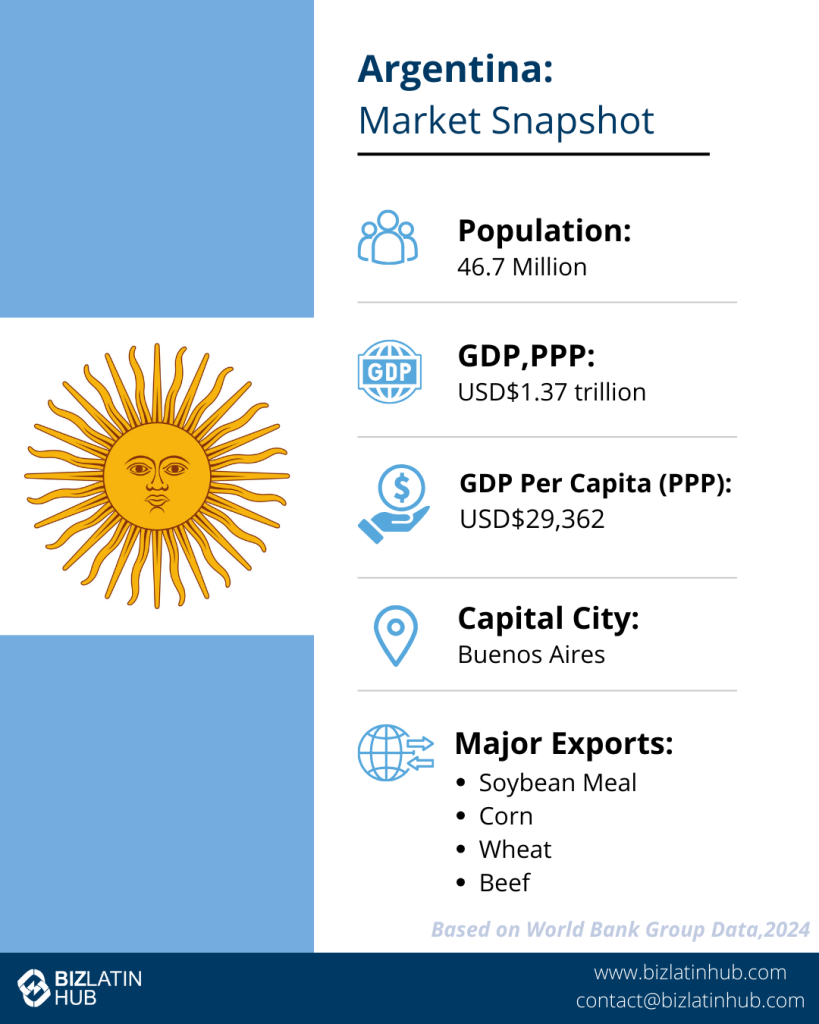
Though political climates in Latin America are stabilizing, businesses must still seek to understand fully the market they’re interested in entering, and have an exit strategy in place if their expansion doesn’t work out. There are several helpful ways to mitigate risk during your Latin American expansion.
One popular technique is engaging a professional employer organization (PEO) to minimize your initial footprint in a new market. PEOs can support small market entry strategies by hiring executives locally to undertake commercial activities for your company. They’ll gauge your prospects for success in your chosen expansion destination, before you make a larger investment abroad.
When exiting a market, it’s important to engage with a knowledgeable local partner who can guide you through court process and following proceedings. Seek out a trusted firm with extensive understanding in local commercial liquidation requirements to ensure your company can exit safely and within the parameters of the law.
Contact the experts to liquidate your business in Argentina
Exiting a market can be stressful, and involve many bureaucratic steps. Business liquidation in Argentina involves a due process to follow and you’ll be seeking reassurance from your legal representative that you’re in good hands.
When you partner with Biz Latin Hub – Argentina, we can help you with all aspects of your investment in Argentina, minimizing risk and ensuring smooth sailing as you enter and operate within the region. Contact us and see how we can add value to your investment in Argentina.
